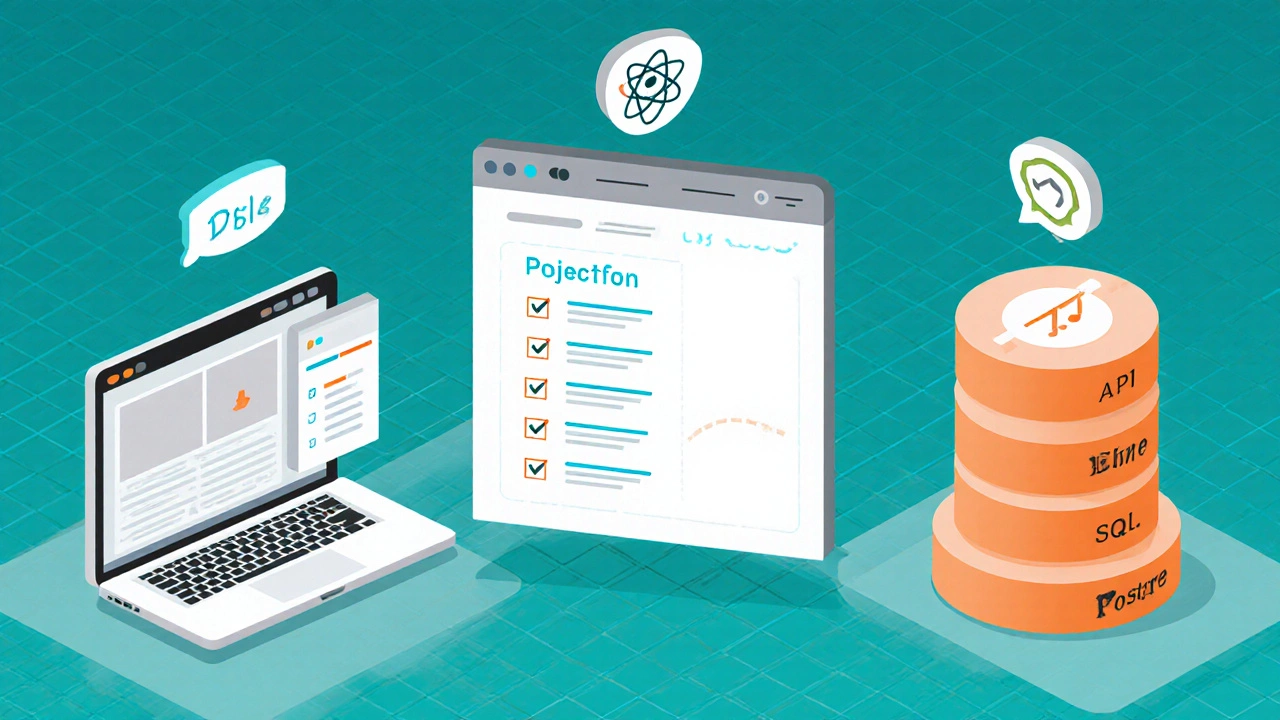3-Month Web Dev Progress Calculator
Weekly Progress
Key Takeaways
- Reaching professional‑level proficiency in three months is possibleif you focus on core fundamentals and follow a disciplined schedule.
- Split the journey into three phases: fundamentals, front‑end, and back‑end.
- Use project‑based learning: build a portfolio site, an interactive app, and a simple API.
- Stay consistent: 30-35hours per week, with daily coding sprints and weekly reviews.
- Avoid common traps like trying to learn every framework at once or skipping version‑control basics.
When we talk about web development is the practice of creating websites and web applications that run in browsers or on servers, the first question is whether you can truly master web development in just three months. The short answer: you can achieve a solid, job‑ready skill set, but true mastery-deep architectural knowledge, performance tuning, and large‑scale system design-takes longer. What you can do in 90 days is build a strong foundation, assemble a portfolio, and be ready for junior‑level roles.
Why Three Months Can Work (And When It Can’t)
Three months equals roughly 12weeks. If you treat each week as a sprint, you get about 90hours of focused study per month when you commit 30hours weekly. That amount of time is enough to cover the essential stack:
- HTML provides the structure of every web page and is learned in a handful of days.
- CSS adds styling; modern tools like Flexbox and Grid can be mastered within a week.
- JavaScript is the programming language that powers interactivity and is the gateway to both front‑end and back‑end development.
- React (or a similar library) gives you a component‑based approach for building UI quickly.
- Node.js lets JavaScript run on the server, enabling full‑stack development with a single language.
- SQL (via PostgreSQL or MySQL) teaches you how to store and retrieve data.
- Git gives you version control-essential for any real‑world project.
If you already have programming experience, the ramp‑up on these topics speeds up dramatically. If you’re starting from zero, allocate extra time for the basics of coding logic and problem‑solving.
Three‑Phase 12‑Week Roadmap
Below is a practical weekly plan. Each phase ends with a mini‑project that reinforces what you’ve learned.
| Week | Focus Area | Core Topics | Mini‑Project |
|---|---|---|---|
| 1‑2 | Fundamentals | HTML5, CSS3, responsive design, basic JavaScript syntax | Personal portfolio site (static) |
| 3‑4 | Front‑end Interactivity | DOM manipulation, ES6+, Flexbox/Grid, Git basics | To‑do list app (React) |
| 5‑6 | Advanced Front‑end | State management (Redux or Context), API consumption, testing (Jest) | Weather dashboard (external API) |
| 7‑8 | Back‑end Basics | Node.js, Express, REST principles, environment variables | Simple CRUD API for notes |
| 9‑10 | Database Integration | SQL basics, PostgreSQL, ORM (Sequelize or Prisma) | Full‑stack blog (React front‑end + Node API + DB) |
| 11‑12 | Polish & Deploy | Authentication (JWT), CI/CD basics, deployment (Vercel/Heroku) | Deploy the full‑stack blog, add README |

How to Make Every Hour Count
Here are proven habits that turn study time into skill acquisition:
- Active coding, not passive watching. After each 15‑minute video segment, immediately code the example yourself.
- Use the Pomodoro technique: 25minutes focused work, 5minutes break. After four cycles, take a longer 15‑minute rest.
- Commit daily to Git. Small, frequent commits reinforce version‑control habits.
- Write a brief “what I learned” note at the end of each day. This converts short‑term memory into long‑term understanding.
- Pair‑program once a week with a peer or use online code‑review platforms. Explaining concepts aloud sharpens your grasp.
Resources That Deliver Results
Choosing high‑quality learning material matters more than quantity. Below are resources that align with the weekly blocks.
- HTML & CSS: Mozilla Developer Network (MDN) tutorials; "HTML & CSS: Design and Build Websites" by Jon Duckett.
- JavaScript: "Eloquent JavaScript" (3rded.) plus freeCodeCamp’s JavaScript Algorithms & Data Structures certification.
- React: Official React docs (hooks section) and the "Complete React Developer" course on Udemy.
- Node.js & Express: "Node.js Design Patterns" (early chapters) and the Node.js Crash Course on YouTube.
- SQL: Khan Academy’s SQL basics and the PostgreSQL tutorial on DigitalOcean.
- Git: "Pro Git" (online book) plus interactive Git tutorials on GitHub Learning Lab.
All the above are free or low‑cost, and many include project files you can adapt for your own portfolio.
Realistic Expectations & Common Pitfalls
Even with a perfect schedule, you’ll hit setbacks. Knowing them ahead of time keeps frustration low.
- Over‑ambitious scope. Trying to master Angular, Vue, and Svelte in three months dilutes focus. Pick one front‑end library (React) and stick with it.
- Skipping fundamentals. Jumping straight to React without solid JavaScript foundations leads to buggy code and slower progress.
- Neglecting debugging. Learning to read console errors and using Chrome DevTools is a skill you must practice daily.
- Ignoring soft skills. Writing clean README files, commenting code, and communicating on GitHub issues are as vital as coding.
By the end of week12 you should be able to showcase three complete projects, each demonstrating a different layer of the stack. That portfolio, not a certificate, will convince recruiters you’re ready for junior roles.

Checklist Before You Call It Done
- ✅ All three projects are deployed on a public URL.
- ✅ Source code for each project is on a public GitHub repo with meaningful commit history.
- ✅ A one‑page résumé lists the technologies you’ve used (HTML, CSS, JavaScript, React, Node.js, PostgreSQL, Git).
- ✅ You can explain the difference between client‑side rendering and server‑side rendering.
- ✅ You’ve solved at least one algorithmic challenge per week (e.g., on LeetCode or HackerRank).
Next Steps After the 3‑Month Sprint
Landing a junior job is just the start. Continue building by:
- Contributing to open‑source projects that use the same stack.
- Learning a complementary back‑end language (Python or Go) to broaden your employability.
- Exploring performance optimization tools like Lighthouse and Web Vitals.
- Studying design patterns and system architecture through books like "Designing Data‑Intensive Applications".
Each of these moves turns a solid 3‑month foundation into a long‑term career trajectory.
Frequently Asked Questions
Is it realistic to learn both front‑end and back‑end in three months?
Yes, if you focus on the most widely‑used tools (HTML, CSS, JavaScript, React, Node.js, and a SQL database). The key is depth over breadth-master the core stack before adding extra frameworks.
How many hours per day should I study?
Aim for 4-5hours of focused coding on weekdays and 6-8hours on weekends. Consistency beats occasional marathon sessions.
Do I need a degree to become a web developer?
No. A strong portfolio, real‑world projects, and solid Git history can substitute for formal education in most junior positions.
What should I include in my portfolio?
Three projects that cover static pages, a dynamic front‑end app, and a full‑stack application with a database. Each should be live, have source code on GitHub, and include a brief write‑up of challenges you solved.
How do I stay motivated during the three‑month sprint?
Break the curriculum into weekly sprints, celebrate finishing each mini‑project, and join online developer communities where you can share progress and get feedback.
